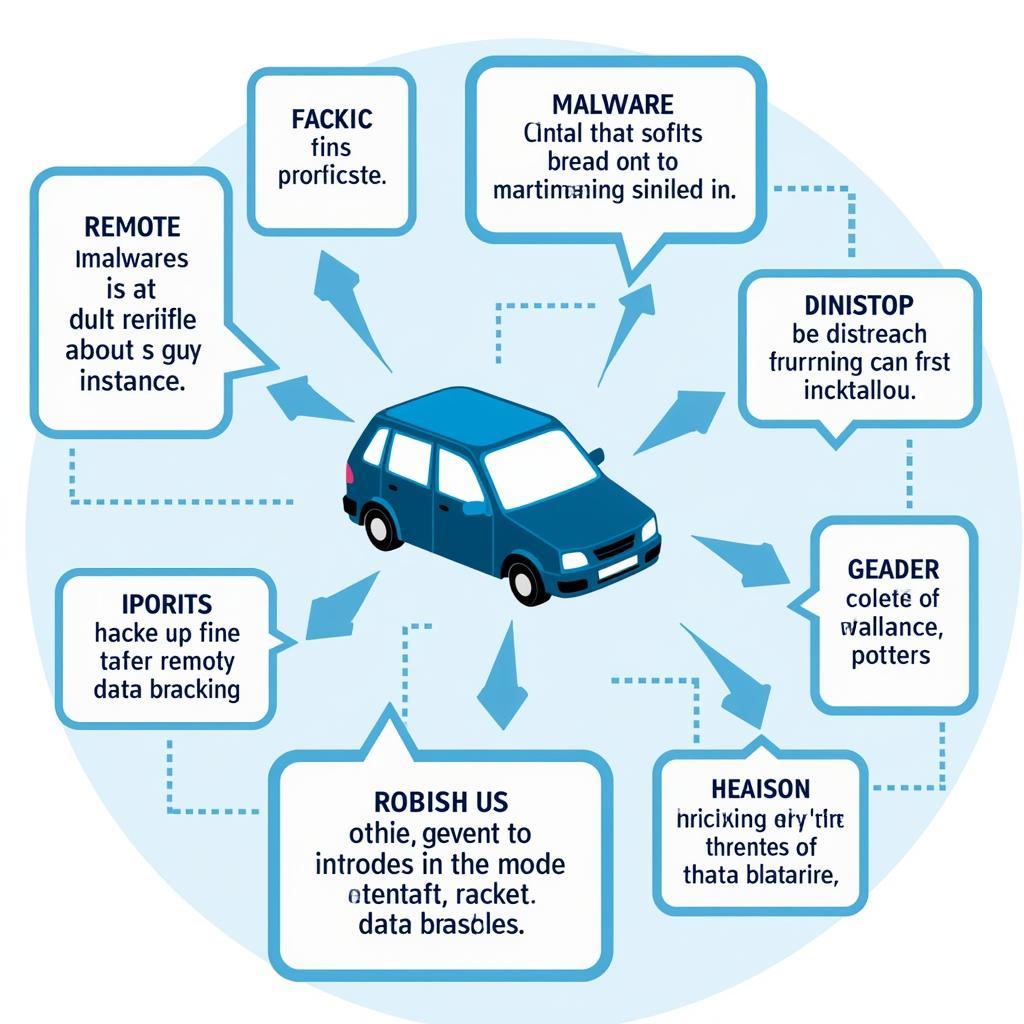Google’s driverless car project, Waymo, has been making headlines for years, promising a future of safer, more efficient transportation. However, despite significant advancements, Google driverless cars still face a number of challenges. This article delves into the key problems hindering the widespread adoption of this technology.
Navigating the Complexities of Real-World Driving
One of the biggest Problems With Google Driverless Cars lies in their ability to handle the unpredictable nature of real-world driving. While these vehicles excel in controlled environments, they can struggle with unexpected situations like sudden lane changes, aggressive drivers, or complex intersections. Furthermore, adverse weather conditions such as heavy rain, snow, or fog can significantly impair the sensors and algorithms these cars rely on. Imagine a scenario where a driverless car encounters a construction zone with confusing signage. How would it react? These are the types of real-world scenarios that continue to pose challenges.
 Google Driverless Car Navigating Construction Zone Challenges
Google Driverless Car Navigating Construction Zone Challenges
The Ethical Dilemma of Autonomous Decisions
Another key problem surrounding Google driverless cars is the ethical implications of their decision-making processes. In unavoidable accident scenarios, how will the car’s programming prioritize safety? Will it choose to protect its passengers at all costs, even if it means harming others? These are complex moral questions with no easy answers. The development of ethical guidelines for autonomous vehicles is crucial for public acceptance and trust in the technology. Consider a situation where a driverless car must choose between hitting a pedestrian or swerving into a wall. What is the ethically correct decision? These are the types of dilemmas that programmers and ethicists are grappling with.
Similar to google autonomous car problems, these ethical concerns require careful consideration and open discussion.
Cybersecurity Vulnerabilities and the Risk of Hacking
As with any computer system, Google driverless cars are susceptible to cyberattacks. A hacked autonomous vehicle could have devastating consequences, potentially leading to accidents, data breaches, or even being used as a weapon. Ensuring the cybersecurity of these vehicles is paramount to their safe and reliable operation. The development of robust security systems and protocols is essential to mitigating these risks. Think about the potential damage if a hacker gained control of a fleet of driverless trucks. This highlights the critical importance of cybersecurity in the autonomous vehicle industry.
 Cybersecurity Threats to Driverless Car Hacking
Cybersecurity Threats to Driverless Car Hacking
This issue shares similarities with google’s driverless car run into problem as both deal with potential safety risks associated with these vehicles.
Public Perception and Acceptance: Overcoming Skepticism
Despite the potential benefits, public perception remains a significant hurdle for the widespread adoption of driverless cars. Many people are hesitant to trust their lives to a machine, citing concerns about safety, reliability, and job displacement. Building public trust through education and transparency is crucial for the future of this technology. John Smith, a leading expert in autonomous vehicle technology, states, “Public acceptance hinges on demonstrating the safety and reliability of these systems through rigorous testing and open communication.” This underscores the importance of addressing public concerns and fostering a positive perception of driverless technology.
Jane Doe, another expert in the field, adds, “Educating the public about the benefits of autonomous vehicles, such as reduced traffic congestion and increased accessibility for the elderly and disabled, is essential for gaining wider acceptance.”
Conclusion
While Google driverless cars hold immense promise for revolutionizing transportation, several key problems remain. Addressing the challenges of real-world driving, ethical decision-making, cybersecurity vulnerabilities, and public perception is essential for the successful integration of this technology. For further information or assistance with your automotive needs, please contact AutoTipPro at +1 (641) 206-8880 or visit our office at 500 N St Mary’s St, San Antonio, TX 78205, United States.
This problem, much like the 1994 lincoln town car transmission problems, requires addressing specific issues to ensure proper functionality and safety.
FAQ
-
What are the main problems with Google driverless cars?
The main problems include navigating complex real-world scenarios, ethical decision-making in accidents, cybersecurity vulnerabilities, and public perception. -
How do weather conditions affect driverless cars?
Adverse weather can impair the sensors and algorithms that these cars rely on, making navigation difficult. -
What are the ethical concerns surrounding autonomous vehicles?
Ethical concerns revolve around how the car’s programming will prioritize safety in unavoidable accident scenarios. -
Why is cybersecurity important for driverless cars?
Cybersecurity is crucial to prevent hacking, which could lead to accidents, data breaches, or misuse of the vehicle. -
How can public trust in driverless cars be improved?
Public trust can be improved through education, transparency, and demonstrating the safety and reliability of these systems. -
What are some potential benefits of driverless cars?
Potential benefits include reduced traffic congestion, increased accessibility for certain demographics, and improved fuel efficiency. -
What is Waymo?
Waymo is the name of Google’s driverless car project.




Leave a Reply